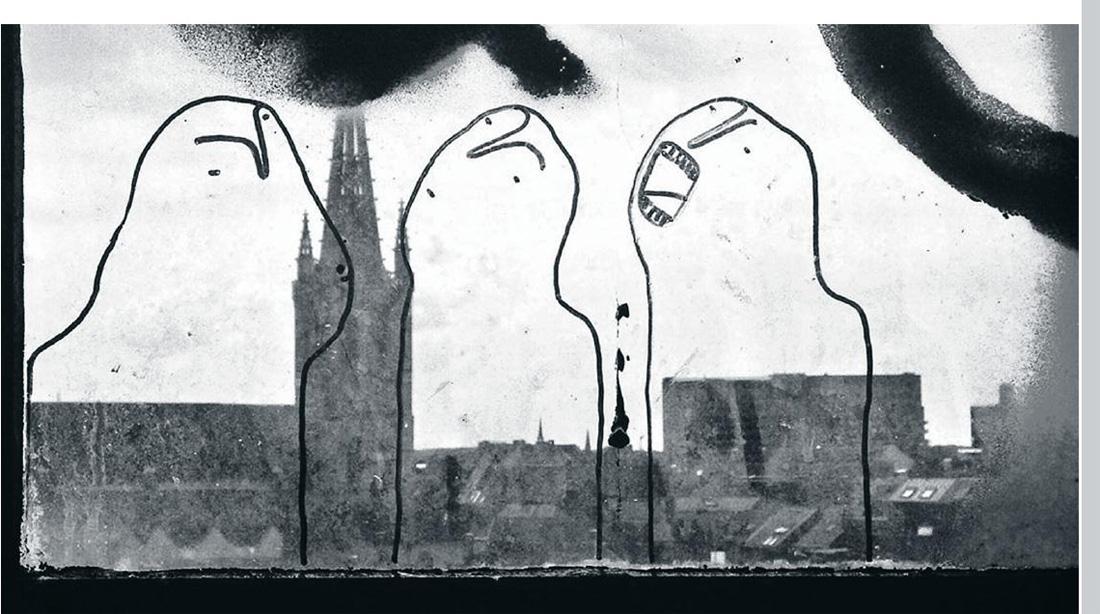改变处事方式的小妙招
毛川 王维

A Simple Formula1 for Changing Our Behavior
“你到底在想些什么?”不管在生活还是工作中,当你以愤怒埋怨的语气喊出这样的问话时,便会开始陷入争执不休的漩涡中。诚然,当预期没有达成,感到失望生气是可以理解的。但是,情绪过后并不能解决任何问题。本文将着重介绍一个改变人们处事方式的小技巧,跟着文中介绍的三步走,你会发现问题有效地解决了,一切也都豁然开朗了。
1. formula: 公式,方法。
2. aghast: 大为震惊地。
3. plastic: 塑料,塑料制品。
4. renovate: 整修,翻新。
5. yell: 大声叫喊。
6. spiral: 盘旋,螺旋形行进,文中指你一句我一句地争执。
7. devolve into: 演变成;fit: (感情的)突发,发作。
8. predictably: 可预测地; inevitably: 不可避免地,必然地。
9. 争执的漩涡总是从期望值没有达到开始的(“你到底在想什么?”),然后以愤怒、挫败和悲伤结束,使得双方都丧失信心。unfulfilled: 未得到满足的,没有成就感的;frustration: 挫败感。
10. equivalent: 等价物,相等物。
11. be inclined to: 想要,倾向于。
12. fusion: 融合,融合物;messiness: 杂乱;longing for: 渴望,盼望。
13. role play: 角色扮演。
14. identify: 识别,确认。
15. applicable: 适用的,可应用的。
16. direct report : 直接下属; sloppy: 草率的,马虎的。
17. clarity: 清楚,明晰。
18. budget: 预算;commitment: (对钱、时间、人力等的)使用,花费。
19. non-negotiable: 无商量余地的。
20. get stuck: 遇到困难; brainstorm: 集体解决难题,合力攻关。
21. impediment: 障碍,阻碍。
22. authentic: 可信的,真实的,后句authenticity为其名词形式。
23. 学习一种新的处事行为,然后以全新的方式出现或者表现得很不一样,总让人觉得很假。
24. hedge fund: 对冲基金。
25. compassionately: 富有同情心地;reverse: 彻底改变。
26. integrate: 使完整,使成为整体。
27. empathize: 移情,站到他人角度考虑问题。
28. solicitous: 热心的,热切的。
“Whoa! What are you doing?” I asked aghast2.
I had just walked into my daughters room as she was working on a science project. Normally, I would have been pleased at such a sight. But this time, her project involved sand. A lot of it. And, while she had put some plastic3 underneath her work area, it wasnt nearly enough. The sand was spreading all over our newly renovated4 floors.
My daughter, who immediately felt my displeasure, began to defend herself. “I used plastic!” she responded angrily.
I responded more angrily, “But the sand is getting all over!”
“Where else am I supposed to do it?” she yelled5.
Why wont she admit when shes done something wrong? I thought to myself. I felt my fear, projecting into the future: What would her life look like if she couldnt own her mistakes?
My fear translated into more anger, this time about how important it was for her to admit mistakes, and we spiraled6. She said something that felt disrespectful to me and I raised my voice. She devolved into a crying fit.7
I wish I could say this never happened before. But my daughter and I were in a dance, one we have, unfortunately, danced before. And its predictably painful; we both, inevitably,8 end up feeling terrible.
This is not just a parenting dance. I often see leaders and managers fall into predictable spirals with their employees. It usually starts with unfulfilled expectations (“what were you thinking?”) and ends in anger, frustration, sadness, and loss of confidence on both sides.9 Maybe not crying. But the professional equivalent10.
Im always inclined to11 ask: Why do I react the way I do? The answer is a complicated fusion of reasons including my love for my daughter, my desire to teach her, my low tolerance for messiness, my need to be in control, my longing for her success,12 and the list goes on.
But it doesnt really matter.
Because knowing why I act a certain way does not change my behavior. You would think that it would. It should. But it doesnt.
The question that really matters—the hard question—is how do I change?
First, I need a better way to respond to my daughter. For this, I went to my wife, Eleanor, who is truly a master. I asked her how I should have handled it.
“Sweetie,” she said, role playing13 me in the conversation with my daughter, “Theres a lot of sand here and we need to clean it up before it destroys the floors, how can I help?”
Simple and effective:
1. Identify14 the problem
2. State what needs to happen
3. Offer to help
Thats a great way to handle it. Think about any problem you face with someone at work. I dont suggest you start the conversation with “Sweetie,” but the rest is applicable15.
I watched a manager get angry at a direct report (well call him Fred) for a sloppy,16 unclear presentation he gave. The manager was right—the presentation was unclear—but the way he responded damaged the employees confidence and Freds next effort wasnt much better. Instead, he could have tried this:
“Fred, this presentation made six points instead of one or two. Im left confused. It needs to be shorter, more to the point, and more professional looking. Would it help if we talk about the point youre trying to make?”
No frustration. Not even disappointment. Just clarity17 and support.
Another time, I watched as a CEO got annoyed at his direct reports for presenting plans that were not reflective of the budget commitments18 they had made. His emotion was understandable. Appropriate, even. But not useful. An alternative might have been:
“Folks, these plans dont reflect the budget numbers we agreed on. Those numbers are non-negotiable19. If you want, you can let me know where you are getting stuck and we can brainstorm solutions.”20
Identify the problem. State what needs to happen. Offer to help. Simple, right?
But—and this is the strange part—in my situation, I couldnt bring myself to do it. As I thought about it, I realized my impediment21.
It didnt feel authentic22.
I believe strongly in leading and living with authenticity. And I was angry and worried about my daughters future. So responding calmly, in that moment, would represent a disconnect between how I felt and how I acted. Thats inauthentic.
Which is when it hit me: Learning—by definition—will always feel inauthentic.
Practicing a new behavior, showing up in a new way, or acting differently, feels inauthentic.23 Changing a dance thats been danced many times before will never feel natural. It will feel awkward, fake, like pretending. The hedge fund24 manager was angry, the CEO was annoyed. Not expressing those emotions feels fake.
But its much smarter, more likely to compassionately teach the people around us, and a better approach to getting them to reverse their ineffective behaviors.25
If we want to learn, we need to tolerate the feeling of inauthenticity long enough to integrate26 the new way of being. Long enough for the new way of being to feel natural. Which, if the new way of being works, happens sooner than you would think.
Yesterday, my daughter was doing homework late at night and I had to ask her to work in the dining room instead of her bedroom because her younger sister needed to go to bed.
But, before I did, I paused. I empathized27 with the challenges she would feel, being asked to leave her room for her sister. Being asked to do her difficult homework in a place that wasnt as comfortable.
“Sweetie,” I said, “Your sister needs to go to sleep and we need to move you into the dining room. How can I help?” Identify the problem, state what needs to happen, and offer to help.
It felt weird. Like I was being overly solicitous28. Fake.
But it worked.
After I helped her move, she quickly got back to her work.
Then, as I was walking out, I heard her say “Dad?” I paused at the door and looked back at her. “Thanks,” she said, without looking up from her book.

